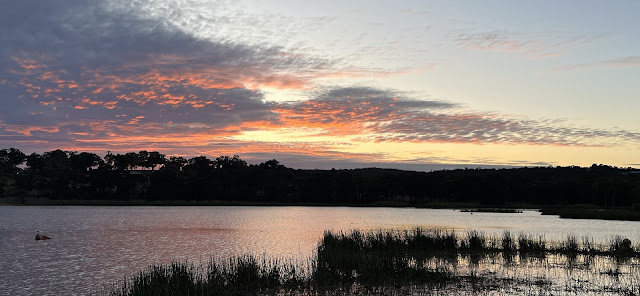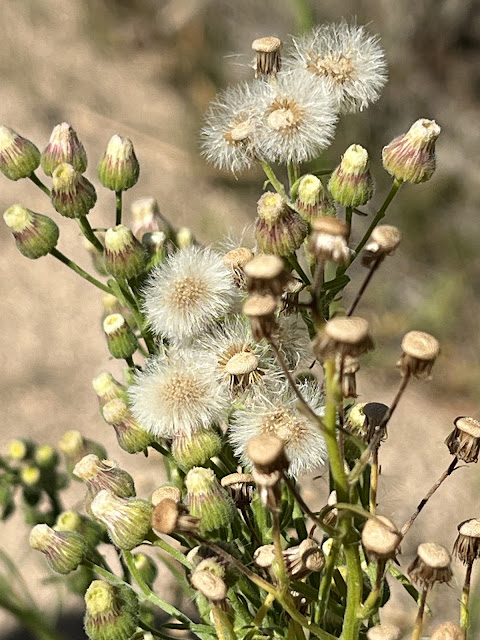The art trail is an impressive and imaginative initiative of HM Prison Lang Kal Kal; the artwork was done by indigenous prisoners and depict the traditional flora and fauna of the area and pays homage to the traditions, customs and stewardship of the local lands. It’s quite wonderful and perfect in that setting. Each installation has a story beside it (I have written them under each photo).
 |
| The trail around the lake. We walked it a number of times |
So come with me as I walk the Koori Art Trail ….. “if you are uncertain Bunjil, the eagle, will direct you. If you are lost Bunjil will find you.”
 |
| Kangaroo Dreaming |
Aboriginal Dreamtime is strongly linked to the kangaroo in particular the story of Bookamurra. Aboriginal warriors tracked Bookamurra for days and finally caught and killed the giant kangaroo
 |
| Traditional fishing watched by spiritual pelican |
The pelican is a caretaker of the water and skies. The snake represents a caretaker of the land.
 |
| Echidna hunting |
Traditional Tucker, the echidna was enjoyed by the local Koori tribes and the spines were used to make jewellery. The echidna was identified as being a totem for some people in the region. Totems are plants or animals that have a relationship and direct link with beings from the dreaming.
 |
| Mirram the kangaroo and Warreen the wombat |
Mirram the kangaroo and warreen the wombat had a fight. Mirram hit warreem with a flat rock and warreem threw a spear at Miriam which stuck in his tailbone. This is how the wombat got the flat head and the kangaroo got his tail.
 |
| Goanna and Serpent Dreaming |
The goanna and snake are totemic spirit and the aboriginal artists paint their goanna and serpent dreaming to honour their ancestral spirits.
 |
| Bunjil Dreaming |
This artwork depicts Bunjil. Bunjil the eagle is a creator deity. A very special spiritual ancestral being in the Kulin nations of Victoria. He is one of two moiety ancestors. The other being Waa the crow. If you are uncertain Nunjil will direct you. If you are lost Bunjil will find you.
 |
| Dancing brolgas |
The Dreaming story of the Brolga is about a Girook, a young girl who loved to dance but became the obsession of the evil spirit man Milum. This story holds great cultural significance for many aboriginal groups who embrace dance as an essential ingredient in their cultural identity.
 |
| Yabbies Dreaming |
Aboriginal travels would allow for a wide range of foods such as fresh water fish, tabbies, echidnas, emu, ducks, goanna, swans, wild lilies that would be eaten. Women caught crayfish and tabbies and spent much of their diving for mussels. They carried the food back to the camp in net bags and baskets.
 |
| Return to Country |
Brewarrina is the traditional meeting place for many tribes in NSW. The fish traps in the river are estimated to be over 40,000 years old making them one of the oldest man made structures on earth. This is our country.
 |
| Platypus Dreaming |
The platypus symbolises wisdom and individuality and that it is OK to be different or not belong to just one group. The Platypus was often linked to the medicine man as he was considered special. This is evidenced today by the platypus being the main symbol on the Ballarat & District register of Aboriginal cooperation.
 |
| Turtle waterways |
For the river people the presence of the Long Neck Turtles along the waterways and around river holes was a sure sign that the water was clean and safe.
 |
| Murray Cod Dreaming |
The Murray COD is the creator of the Murray and Darling rivers. Pondi, a huge Murray cod created the rivers by digging with its head making the rivers deep and by swinging its powerful tail caused all the bends in the rivers.
































































